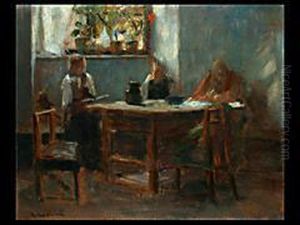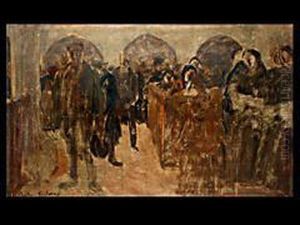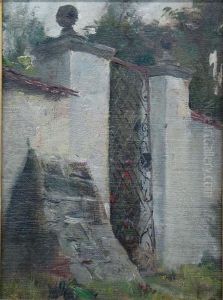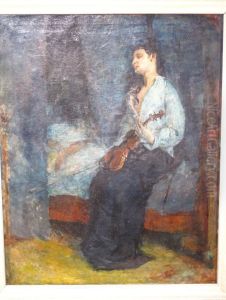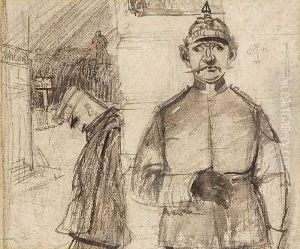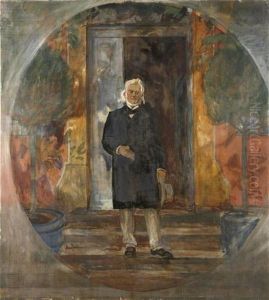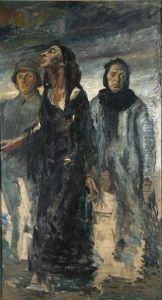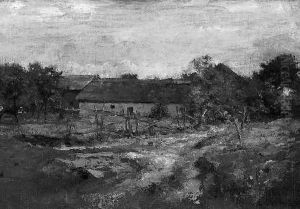Carl Johann Becker-Gundahl Paintings
Carl Johann Becker-Gundahl was a German painter and illustrator, known for his historical and religious paintings, as well as portraits. Born on October 7, 1856, in Frankfurt am Main, Germany, he developed an interest in art at an early age. His initial artistic training began at the Städel Art Institute in Frankfurt, under the guidance of Eduard von Steinle, a prominent Nazarene painter. The Nazarenes were a group of early 19th-century German Romantic painters who aimed to revive honesty and spirituality in Christian art.
After honing his skills in Frankfurt, Becker-Gundahl continued his studies at the Academy of Fine Arts Munich, which was a leading art institution in Germany at the time. There, he was influenced by the works of historical painters and continued to develop his style, which combined elements of Romanticism with the more academic and classical approaches taught at the Academy.
Becker-Gundahl's works often depicted scenes from German history, Biblical narratives, and classical mythology. He was also known for his portraiture, capturing the likenesses of notable individuals of his time. His painting technique was characterized by a fine attention to detail and a rich palette, which helped to convey the emotional depth of his subjects.
Throughout his career, Becker-Gundahl exhibited his works at various art shows and gained recognition for his contributions to German art. He was part of the Munich Secession, a group of artists who broke away from the traditional academic standards to promote more modern styles of painting. However, Becker-Gundahl's style remained relatively conservative compared to some of his more avant-garde peers.
Carl Johann Becker-Gundahl passed away on April 17, 1925, in Munich. Today, his works can be found in several art collections and museums, where they continue to be appreciated for their historical significance and craftsmanship. Although not as widely known as some of his contemporaries, Becker-Gundahl's artistry represents an important link between the traditional and the modern in late 19th and early 20th-century German art.
